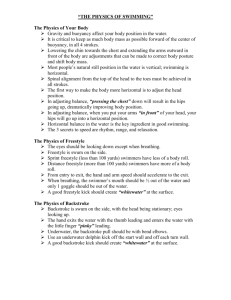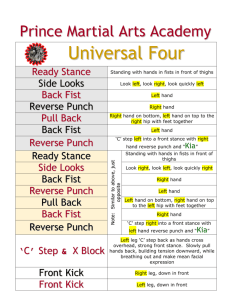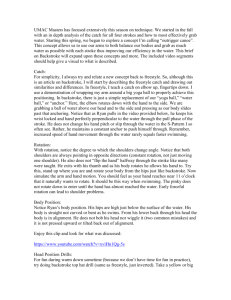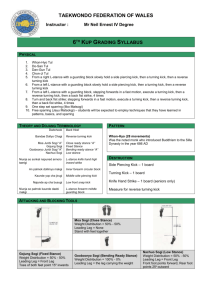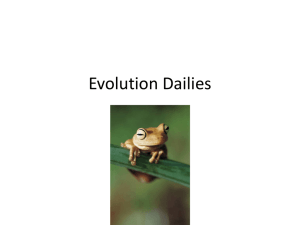TASS Workshop - Goal Setting
advertisement
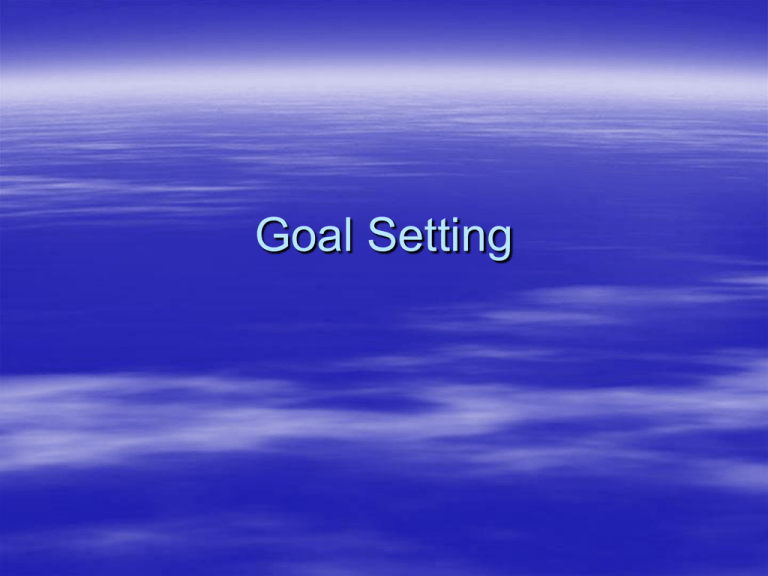
Goal Setting What common traits do these four athletes share? Where are you going? What is your journey? Where are you now? Where do you want to get to? Where are you going? “Excuse me, Sir,” Alice inquires “Could you tell me which road to take?” Wisely, the caterpillar asks," Where are you going?” Somewhat dismayed, Alice responds, “Oh, I don’t know where I am going, Sir.” “Well,” replied the caterpillar, “if you don’t know where you are going, it really doesn’t matter which road you take.” (Alice in Wonderland – Lewis Carroll) Goal Setting - Why bother setting goals? What is my personal journey? How am I going to get there? Long term vision and short term motivation Theory of motivation - - energises athletes to become more productive and effective Why set goals? 1. Suffer less from stress and anxiety 2. Concentrate better 3. Show more self confidence 4. Perform better 5. Are happier with their performances What do you see? What don’t you see? What’s beneath the surface?? Goal Hierarchy PERSONAL SUCCESS CONTROL OUTCOME PERFORMANCE PROCESS (1%’s) How do we set productive and effective goals? Task : Write down one goal that you have set yourself for this season / year What type of goal have you set yourself? Outcome / Result oriented (Ego orientation?) e.g. To be selected for GB TEAM / To break 60secs for 100m free Performance / technically oriented (Task Orientation?) e.g. To achieve the National Qualifying Time in 100 and 200 Backstroke. Process Goal / training goals (task oriented) e.g. To develop my acceleration between 0-5 metres Goal: To become a better swimmer Goal – “To become a better swimmer” Surface – worthwhile; too general, impossible to measure, vague as to how or when the goal will be achieved Skill analysis (Performance Profile, coach) – six-beat leg kick weak New and improved goal : In training to achieve 65% freestyle and backstroke swimming with a six-beat leg kick and 90% of kicking drill with a six-beat leg kick. Short Term goal – In training to achieve 55% of swimming with six-beat leg kick & 85% kicking drill with a six-beat leg kick. Are goals acceptable to the athlete? (Ownership!) Goal setting staircase Setting Goals – the rules ! SMARTER Specific Measurable Agreed Realistic Time phased Elastic Recorded Research (1999) : College-aged soccer players assigned to one of five goal groups (a,b,c,d & e) Five weeks of training followed, two groups out-performed the others (improvement); one group showed little or no improvement Common Goal Setting problems Set more goals for competition than for practice Set goals that are too difficult, creating stress Set too many goals Task oriented performers motivated by self improvement goals & ego-oriented performers more motivated by outcome goals Where do I go from here? Creating a personal goal plan Setting process & performance goals (Controlling the controllables) How will I monitor goal progress? Will I need to re-adjust my goals? How will YOU become a winner? Girls Boys



